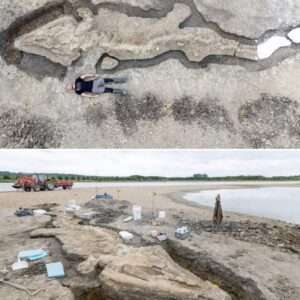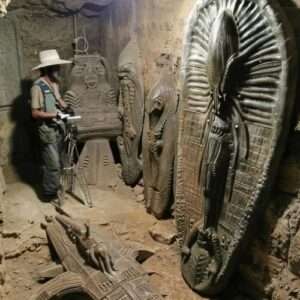Around 10,000 years ago, the Sahara Desert, now renowned as the world’s largest hot desert, boasted a significantly different landscape. It thrived as a lush region brimming with lakes, rivers, and a diverse array of wildlife, in stark contrast to the arid conditions prevailing today.
Evidence gleaned from ancient rock paintings, fossil remains, and other archaeological findings indicates that this expanse underwent dramatic climate shifts, evolving from a verdant environment to the dry desert that exists today. These transformations offer a captivating glimpse into the Earth’s dynamic climate history and the astonishing adaptability of life in the face of such formidable environmental extremes.
In ancient times, the Sahara was a verdant paradise, experiencing plentiful rainfall that sustained a flourishing ecosystem. The presence of rock art depicting a variety of animals, including hippos, crocodiles, and elephants, provides compelling evidence of this bygone era of abundant water sources and lush vegetation. Fossil remains discovered in the region further attest to the diverse array of species that once thrived in this now desolate expanse.

However, as millennia passed, the climate of the Sahara underwent a dramatic transformation. The gradual shifting of Earth’s axial tilt and orbital parameters led to changes in regional weather patterns, resulting in the onset of arid conditions. The once fertile landscape gradually gave way to vast expanses of sand dunes and rocky terrain, shaping the desert as we know it today.
Despite these monumental changes, life in the Sahara persevered, showcasing remarkable adaptability in the face of evolving environmental conditions. Plant and animal species in the region developed unique physiological and behavioral adaptations to thrive in the harsh desert environment, demonstrating the resilience and resourcefulness of life on Earth.
The history of the Sahara Desert serves as a poignant reminder of the ever-changing nature of our planet’s climate and the profound impact these changes can have on ecosystems and species. Through studying the past transformations of this iconic desert, we gain valuable insights into the intricate interplay between climate, geography, and life on Earth, underscoring the importance of environmental conservation and sustainable practices to safeguard our planet’s fragile ecosystems for future generations.





